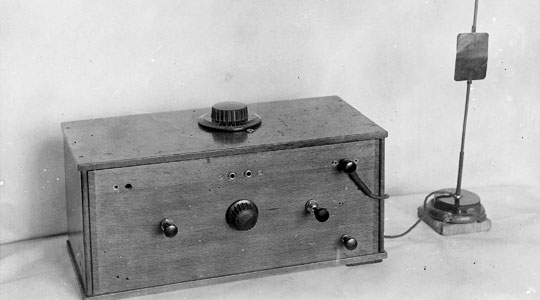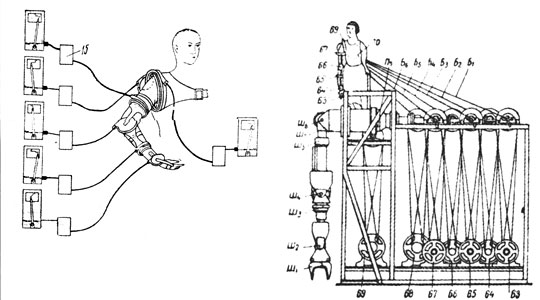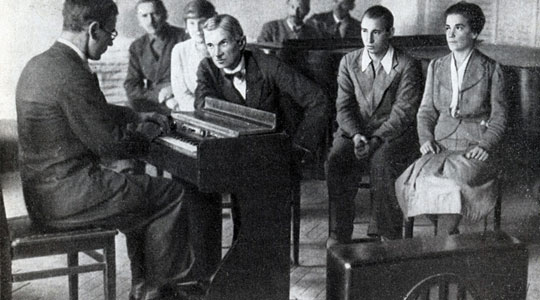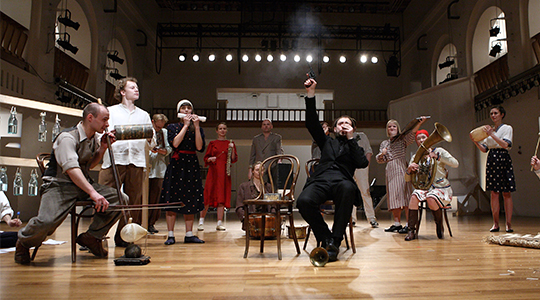Generation Z : ReNoise
Russian Pioneers of Sound Art and Musical Technology in the Early 20th Century
The Generation Z: ReNoise exhibition assembles rare original early sound equipment and explores the fate of researchers, sound experimentalists, and inventors active during a Russian period of revolution, war, and dictatorship in the first decades of the last century.
Generation Z: ReNoise is assembled and curated by Andrey Smirnov, former founding director of the Theremin Center for Electroacoustic Music at the Moscow State Conservatory and head of its Sector for Media Technology, in collaboration with Liubov Pchelkina, researcher at the State Tretyakov Gallery, Moscow.
Premiering in Berlin as part of the exhibition is ReNoise, a collaboration with researchers and artists Konstantin Dudakov-Kashuro, Peter Aidu, and Evgenia Vorobyeva, exploring the unique proletarian amateur noise music culture that thrived in post-revolution Russia.
All contributors will be present throughout the festival week to give lectures, workshops, and guided tours to further illuminate this fascinating period of musical and technological inventiveness.
Generation Z
Generation Z is an ongoing project by Andrey Smirnov and Liubov Pchelkina that attempts to restore the censored history and culture of the Russian artistic Utopia of the 1910s and 1920s, which was destroyed through its collision with the totalitarian state of the 1930s. This intense period of activity fostered a self-organizing, non-hierarchical, horizontal network of professional and social interrelations that fostered future scientific and cultural development. Musicians, artists, poets, scientists, psychologists, engineers, and thinkers in many other fields collectively joined forces to put into practice a socio-utopian vision. Many artists and musicians were ready to move their workshops to factories and industrial plants to mark the transition from individual to communal creativity; for those inspired with revolutionary ideas, avant-garde approaches to the arts became an integral aspect of social revolution.
Andrey Smirnov's Sound In Z from The Wire Magazine on Vimeo.
This revolutionary period saw many compositional techniques and musical concepts arise, which either forecast future technology or even remain in use today. The Variophon, Theremin, Terpistone, Rhythmicon, Emiriton, and Ekvodin are just some of the amazing inventions that saw the light of day during this period. Voracious experimentation lead to the development of noise music, microtonal composition, kinetics, and performerless music, as well as the invention of graphical sound, which can be considered the first synthetically-generated music.
Graphical (or Optical) sound was predicted as far back as 1916 by Arseny Avraamov, who wrote: "By knowing the way to record the most complex sound textures by means of a phonograph, after analysis of the curve structure of the sound groove, directing the needle of the resonating membrane, one can create synthetically any, even most fantastic sound by making a groove with a proper structure of shape and depth". This technique led to a proliferation of trends including spectral analysis decomposition and re-synthesis technique, developed by Boris Yankovsky, which is related to the separation of the spectral content of sound and its composites, effectively acting as a precursor to the popular recent computer music techniques of cross synthesis and the phase vocoder. Predictions or forecasts of future technologies, such as the development of "radio-musical instruments", and networked communications channels (internet) also abounded at this time.
The results from this period were surprising and unexpected, and ahead of the times by decades. However, collision with the state in the 1930s was fatal. In less than ten years, all such experimental work was forced to an end, and was almost instantly forgotten. Many of the ideas and inventions were "invented" abroad later, and are still used today without knowledge of their true origin.
Following presentations in Paris, Budapest. St. Petersburg and Moscow, and the publication of the book Sound in Z: Experiments in Sound and Electronic Music in Early 20th-century Russia (Walter König 2013), the Berlin version of the Generation Z exhibition will be expanded with the new section ReNoise.
For in detail information, please visit Andrey Smirnov's website.





ReNoise
The ReNoise part of the exhibition explors the unique proletarian amateur noise music culture that thrived in post-revolution Russia. The complementary project to Andrey Sminrov and Liubov Pchelkina’s "Generation Z" research project sheds light on two main components of early Soviet noise art uniting these together for the first time. Through a variety of handmade proletarian instruments, the project explores amateur noise bands that were widely spread across post-revolutionary Russia. In a second section, a special selection of reconstructions of the more than 200 mechanical noise instruments invented by Vladimir Popov between the 1920-1950s will be displayed. This particular history remains hidden until today, partly due to the neglect typical of the Socialist Realism era, and partly because only a small amount of evidence has been preserved.
Although it is difficult to trace the origins of Soviet noise orchestras, they seemingly first appeared in 1921 as part of small agitational theatre troupes. Routed through ancient folklore and musical clownery, avant-garde sound art, and, in some ways, a taste for jazz, noise music quickly entered the terrain of Bolshevik mass education. These eccentric noise orchestras survived until the mid-1930s. However, they gradually shifted from small avant-garde theatres and agitprop brigades to larger proletarian masses, and appealed especially to the younger generation, for whom noise bands served as the initial step to musical education.
Another reason for the quick growth of proletarian noise ensembles was the deficiency of professionally manufactured instruments, especially after the World War I and the Civil War. These amateur practices advanced "art into life", by making no distinction between everyday life and art, production and culture, work and leisure, musical instruments and working tools. In this regard, the amateur noise movement partly satisfied what was proclaimed in 1923 by the productivist theoretician Boris Arvatov, "that for the first time musicians hadn’t a desire to organize artificial non-vital sound material, but material of life as such (street and factory noises etc.), noises of everyday life".
The ReNoise section of the exhibition offers an opportunity to examine some of the early Soviet noise instruments, many of which can be tried out be the visitors. It also shows select reconstructions of the more than 200 mechanical noise instruments invented by Vladimir Popov between the 1920s and 1950s.
Next to the exhibition, ReNoise will host a 4-day workshop during CTM 2014, during which participants will engage with the history of homemade instruments and proletarian noise orchestras and learn to play some of them, creating a composition that they will culminate in a closing performance open to the public.


Supported by the Moscow Polytechnical Museum, and The Music Laboratory.
Facts
Opening Times
Opening: 24.01.2014, 19:00
Runs: 25.1–23.2.2014
During CTM: 25.1.–3.2. Mon–Sun 12–22:00
All other days: 12–19:00


